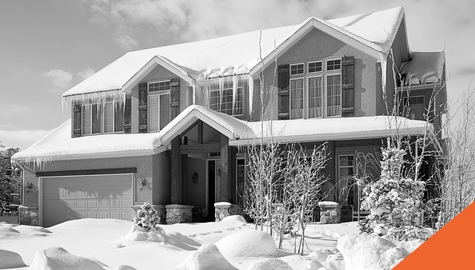The Traveler’s Guide: The Best Vehicles to Tow Behind an RV
Wednesday, 8 May 2024
Heading out on an RV adventure is a dream come true for many people who love to travel. The freedom to roam, the thrill of the open road, and the endless possibilities of exploration await. But every RVer knows that choosing the right vehicle to tow behind their RV is paramount to a successful journey. In this comprehensive guide, we delve deep into the world of flat towing, revealing the best vehicles to tow behind an RV. From understanding the specific features of RV towable cars to a detailed list of flat towable vehicles, we leave no stone unturned in helping you prepare for your RV travels.
What is Flat Towing?
RV flat towing, also known as dinghy or four-down towing, is a preferred method among RV enthusiasts due to its convenience and maneuverability. Unlike traditional towing with trailers or dollies, flat towing involves pulling a vehicle with all four wheels on the ground behind an RV or motorhome. This streamlined approach simplifies setup, enhances driving stability, and offers flexibility for exploring nearby attractions without the need to maneuver a large RV. Overall, flat towing provides a convenient, efficient, and versatile solution for RV owners, making it a popular choice worldwide.
What Vehicles Can You Flat Tow?
Flat towing compatibility hinges on several factors, including the type of vehicle, transmission, and weight ratings. Let’s explore each aspect in detail to understand what makes a vehicle suitable for flat towing.
Type of Vehicle
Not all vehicles are created equal when it comes to flat towing. Vehicle selection is critical in ensuring a smooth and safe towing experience behind an RV. While certain vehicles are well-suited for flat towing, others may not be fit due to their design or transmission setup. Generally, vehicles with manual transmissions or specific automatic transmissions are preferred for flat towing. Later in the blog, we will explore specific examples of vehicles that are great for towing behind an RV.
Transmission
The transmission type is a pivotal factor in determining flat towing feasibility. Manual transmissions are often preferred because they can disengage the wheels from the drivetrain, mitigating potential transmission damage during towing. However, advancements in automotive technology have led to the development of automatic transmissions with features specifically designed for flat towing.
Manual Transmissions: Vehicles equipped with manual transmissions are inherently suitable for flat towing. By shifting into neutral, the wheels are disconnected from the engine, allowing for effortless towing behind an RV. Due to this feature, manual transmissions provide a straightforward and reliable option for flat towing enthusiasts.
Automatic Transmissions: While not all automatic transmissions are suitable for flat towing, certain models have features that facilitate flat towing. Vehicles with a neutral tow mode or similar functionality can be safely flat towed behind an RV, offering greater flexibility in vehicle selection. It's essential to consult the vehicle's owner's manual to verify its compatibility with flat towing.
Weight Ratings
Before embarking on a flat towing journey, careful attention to weight ratings is paramount for safety and efficiency. Exceeding weight limits can lead to mechanical issues and compromise road safety, highlighting the importance of adhering to manufacturer specifications.
Gross Vehicle Weight Rating (GVWR): The GVWR represents the maximum allowable weight of the vehicle, including passengers, cargo, and fuel. When flat towing, the weight of the towed vehicle adds to the overall load, which must not exceed the GVWR to maintain safe driving conditions.
Towing Capacity: In addition to the vehicle's GVWR, the towing capacity specifies the maximum weight the motorhome can tow behind it. It's crucial to select a towed vehicle whose weight falls within the towing capacity of your RV to prevent strain on the towing system and ensure optimal performance.
By adhering to these weight guidelines and selecting a vehicle that meets the criteria for flat towing compatibility, RV travellers can confidently enjoy their adventures, knowing that they have taken the necessary precautions for a smooth and worry-free towing experience.
Steps to Take Before Flat Towing
Before embarking on your flat towing adventure, it's crucial to meticulously prepare your vehicle to ensure a safe and seamless towing experience. By following this series of essential steps, you can minimize the risk of any issues occurring while driving.
Check Towing Capacity: Ensure that the towing vehicle can safely tow the weight of the car you intend to tow. Check the owner's manual for the towing capacity of your vehicle, or contact the manufacturer if you're unsure.
Inspect Both Vehicles: Examine both the towing vehicle and the car to be towed for any signs of damage or mechanical issues that could affect towing.
Prepare the Towing Equipment: Make sure you have the necessary towing equipment, including a tow bar, safety chains, hitch, and any other components specific to your towing setup. Ensure that all equipment is in good condition and properly installed.
Check Towing Laws and Regulations: Research and understand the towing laws and regulations in your area, including weight limits, towing speed limits, and any required towing permits or licenses.
Disconnect Drivetrain (if applicable): If the car being towed is not a manual transmission, you may need to disconnect the driveshaft or use a transmission lube pump to prevent damage to the transmission.
Secure Loose Items: Remove any loose items from the car being towed and secure them to prevent damage or loss during towing.
Check Fluid Levels: Ensure that the fluids (including engine oil, transmission fluid, coolant, brake fluid, and power steering fluid) in both vehicles are at the appropriate levels.
Check Tire Pressure: Check the tire pressure in both vehicles, including the spare tire, and inflate them to the recommended levels.
Test Brakes and Lights: Test both vehicles' brakes, turn signals, and brake lights to ensure they are working properly.
Check Steering Lock: Ensure that the steering wheel of the towed vehicle is unlocked to allow for smooth towing.
Remove Fuses (if applicable): Some vehicles require the removal of specific fuses to prevent damage to the transmission or other components while being towed. Refer to the owner's manual for instructions on which fuses to remove.
Attach Tow Bar and Safety Chains: Securely attach the tow bar to both vehicles and connect the safety chains according to the manufacturer's instructions. Make sure all connections are tight and secure.
Verify Visibility: Make sure that your mirrors provide clear visibility of the towed vehicle while driving.
Practice Maneuvering: Before hitting the road, practice maneuvering the towing vehicle with the attached car in a safe, open area to get a feel for how it handles.
Plan Your Route: Plan your route carefully, avoiding steep inclines, sharp turns, and rough terrain whenever possible.
By adhering to these pre-towing preparations, you can go on your trip with confidence, knowing that your vehicle is properly equipped and safeguarded against potential issues. Taking the time to perform these essential checks and procedures demonstrates a commitment to safety and responsible towing practices, ensuring a smooth and enjoyable travel experience for you and your fellow road adventurers.
The Best Cars to Flat Tow
So, what are the best vehicles to take on your RV adventure? From compact cars to rugged 4x4s, we've compiled a list of cars that can be towed flat behind a motorhome. Top picks to suit every traveller's preferences.
1. Compact Cars
- Mini Cooper
- Fiat 500
- Toyota Yaris
Compact cars are renowned for their lightweight construction, making them effortless to tow behind an RV and contributing to improved fuel efficiency during travel. Furthermore, their compact size allows for easier navigation through crowded campgrounds or tight parking spaces. Additionally, the simplicity of their transmission systems enhances the towing experience, reducing the need for complex setup procedures and ensuring a seamless journey for RV enthusiasts seeking convenience and ease of use.
2. 4x4s
- Jeep Cherokee
- Toyota Tacoma
- Ford Bronco
4x4 vehicles are engineered to tackle rugged terrain easily, making them well-suited for towing behind an RV on various landscapes. Their robust build quality ensures durability and reliability, providing peace of mind to RV travellers venturing off the beaten path. Moreover, the presence of a neutral transfer case simplifies the flat towing process, minimizing the risk of mechanical damage and ensuring a smooth towing experience across diverse terrains.
3. Trucks
- Ford F-150
- Chevrolet Silverado 1500
- Ram 1500
Trucks offer a myriad of benefits for RV owners, serving as versatile companions for flat towing behind an RV. In addition to their towing capabilities, trucks provide ample cargo space, making them ideal for transporting larger items or outdoor gear needed at the destination. With features like spacious crew cabs and innovative storage solutions, trucks enhance comfort and convenience during travel, offering a seamless transition between the RV and exploration of surrounding areas.
4. SUVs
- Honda CR-V
- GMC Acadia
- Nissan Rogue
SUVs represent the perfect blend of versatility and functionality for flat towing behind an RV. Their spacious interiors and ample cargo capacity make them ideal for carrying passengers, luggage, and recreational equipment. Additionally, SUVs provide easy access to amenities and attractions in various destinations, eliminating the need to navigate congested areas with the larger RV. Whether exploring national parks or embarking on outdoor adventures, having an SUV in tow enhances the overall travel experience for RV enthusiasts.
Be sure to check your owner’s manual, as the ability to be flat towed may vary by year in certain vehicle makes and models.
Alternatives to Flat Towing
While flat towing offers convenience and simplicity, there are instances where alternative towing methods may be necessary:
On a Car Dolly
When flat towing isn't feasible, employing a car dolly presents a practical alternative. This method involves lifting the vehicle's front wheels off the ground while the rear wheels remain in contact with the road surface. A car dolly makes towing possible without requiring vehicle modifications or specialized equipment. This approach is particularly useful for vehicles that cannot be flat towed due to design constraints or transmission limitations. With the front wheels securely cradled on the dolly, RV enthusiasts can confidently tow a diverse range of vehicles behind their motorhome, expanding their travel options without compromising on convenience.
Inside a Trailer
For larger vehicles or those with intricate towing requirements, transporting the vehicle within a trailer emerges as a superior solution. This method involves loading the vehicle onto a trailer, providing a secure and enclosed environment for transit. While it demands additional equipment and meticulous planning, towing inside a trailer delivers unparalleled protection and security for the transported vehicle. This approach is ideal for safeguarding valuable or delicate vehicles against road debris, inclement weather, and other external factors. Additionally, towing inside a trailer offers maximum flexibility, easily accommodating a wide array of vehicle types and sizes. Despite the added complexity, RV enthusiasts benefit from the peace of mind and assurance that their vehicles arrive at their destination unscathed and in pristine condition.
In essence, while flat towing remains a preferred method for its simplicity and efficiency, alternatives such as car dollies and trailers offer viable solutions for towing vehicles that cannot be flat towed. By leveraging these alternative methods, RV travellers can navigate diverse towing challenges and embark on their adventures with confidence and peace of mind.
Peace of Mind During Your Road Trip
Choosing the best vehicle to tow behind your RV is crucial to enhance your travel experience and provide peace of mind on the road. Now that you know what vehicles can be towed behind a motorhome, it’s a great time to shift your focus to staying protected throughout your travels.
With BIG's comprehensive insurance coverage and competitive rates, you can enjoy worry-free adventures wherever the road may lead. If you plan to go on an RV adventure in the near future, contact a BIG broker to discuss your insurance options for your automotive, RV, or travel needs or request a quote today.



